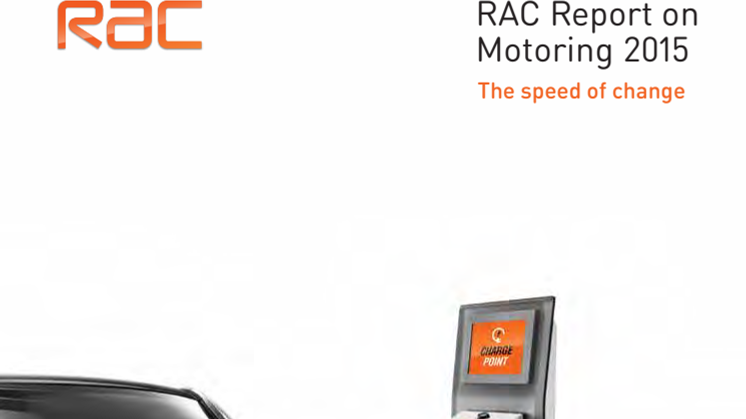Press release -
More young people admit to drink and drug driving in 2015
Men more likely to drink-drive than women
Majority of motorists want reduced drink-drive limit
Nearly four in 10 do not believe number of drug-drivers will be reduced by new police powers
More than a quarter of young motorists aged 17-24 (26%) – the equivalent of over 706,000 qualified drivers* – think or know they have driven while over the drink-drive limit, according to research carried out for the RAC Report on Motoring 2015**.
This is a 5% increase on last year’s findings and higher than the equivalent figure for all motorists which stands at 19%. Not surprisingly, concern about drink-driving is highest among 17 to 24-year-old motorists, and when asked to identify their single biggest motoring concern, 15% of this age group identified drink-driving, compared to 9% of all drivers.
The 2015 Report on Motoring research shows 8% of young drivers are sure they have driven when over the limit – 3% up on 2014 – and a further 18% think they may have done so compared to 16% last year. Seven per cent said they committed the offence shortly after having a drink while 6% think they might have, and 13% believe they may have done so the morning after.
The data also indicates that young men aged 17-24 are far more likely to have driven while over the limit than women of the same age. This tendency is also seen among the 25 to 44-year-old age group with 15% of male drivers saying they have driven over the limit shortly after drinking in contrast to 9% of women.
Thirteen per cent of young drivers aged 24 and under say they have been in a car with a driver they have suspected to be over the limit shortly after drinking, in contrast to the 6% average from the 1,555 motorists questioned across all age groups. This represents a worrying 5% increase on 2014.
Young drivers are also the most likely to drive under the influence of class A or B drugs. While only 2% of all motorists say they have done so, among those aged 17-24 the number rises to 7%. The Report on Motoring found that 6% of all motorists say they have driven under the influence of drugs – including class C tranquilisers and legal prescription drugs – in the past 12 months, up from last year’s 2%. The equivalent statistic for 17-24 year-olds was 13%.
RAC chief engineer David Bizley said: “Official figures show younger drivers are more likely to be involved in serious road-traffic accidents*** so it is extremely worrying to see an increase in both the number of 17 to 24-year-olds admitting to driving under the influence of drink and illicit drugs in the last year and also in those saying they have been a passenger in a car driven by someone over the limit. The latter may reflect the greater level of first-hand experience of drink-driving that younger motorists have, but is nevertheless a cause for concern.
“The Coalition Government did not fulfil its pledge to publish a green paper on young driver safety which was disappointing. The RAC therefore calls on the current Government to address this by prioritising proposals on how safety among younger motorists can be improved.
“We would like to see an open-minded approach to tackling the problem that includes new technical solutions such as telematics, best practice from overseas like graduated licensing and encouraging better driving through better information and education.”
Drink-driving is a top concern for all motorists with almost one in 10 (9%) listing it as their number one issue – equal to ‘drivers texting or using the internet on hand-held mobile phones’ and just behind the top concerns of the ‘state of local roads’ and the ‘cost of fuel’ both of which are number one concern for 10% of motorists. A further three in 10 (29%) also cite drink-driving as one of their top four concerns.
When asked whether the rest of the UK should follow Scotland in reducing the blood-alcohol limit to 50mg/100ml from the current 80mg/100ml level or lower, more than half (56%) of motorists agreed.
David Bizley added: “Having different drink-drive limits in different parts of the UK is unsatisfactory so long as we still have one UK driving licence and we urge the Government to take steps to mirror Scotland’s approach across the rest of the UK.”
In March 2015, the Coalition Government introduced new drug-driving legislation. This gave police the powers to use “drugalyser” devices at the roadside and identified eight illegal and eight prescription drugs with specific limits which could impair safe driving.
Worryingly, a sizeable minority of motorists (37%) do not believe the new law will reduce the number of drug-drivers on the roads. This is largely because drug-drivers are viewed as risk-takers and so more likely to ignore such a law and risk being caught.
David Bizley said: “Our research findings for the Report on Motoring also confirmed once again that drug-drivers are much more likely to be drink-drivers. Of the 6% who admit to driving under the influence of drugs, two-thirds (4%) also claim to have driven under the influence of alcohol.
“Conviction rates may, however, understate how widespread drug-driving is, given that police find it easier and cheaper to test for drink-driving. Penalties for the two offences are the same and in cases where police suspect a motorist of being affected by both drugs and alcohol, they may decide to prosecute only for the latter because testing is less expensive and the processes simpler to apply.”
Topics
Categories
Notes to Editors
About the RAC
With more than eight million members, the RAC is one of the UK's most progressive motoring organisations, providing services for both private and business motorists. Whether it's roadside assistance, insurance, buying a used car, vehicle inspections and checks, legal services or up-to-the-minute traffic and travel information – the RAC offers a solution for all motoring needs. The RAC is committed to making motoring easier, safer, more affordable and more enjoyable for drivers and road users.
The RAC is the motorist’s champion and campaigns to support the interests of its members and UK motorists at a national level, including advancing levels of road safety, supporting the needs of young drivers and voicing concerns about the increasing cost of motoring. The RAC’s annual Report on Motoring – first published in 1989 – provides a clear insight into the concerns and issues facing today’s motorists.
For the very latest news on UK fuel prices, check RAC Fuel Watch or follow #racfuelwatch on Twitter. This is a comprehensive guide to the latest UK unleaded petrol and diesel prices – both at the wholesale level and at the pump. RAC Fuel Watch analyses how prices changed through the previous month and compares the most recent prices with those from three, six and 12 months before.
Key facts:
- RAC patrols fix four out of five vehicles at the roadside and on average within 34 minutes
- RAC vans carry more than 500 parts and tools to get members’ vehicles going again
- 98% of members would recommend RAC Rescue to their friends and family


